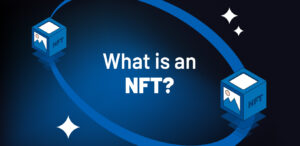The production of NFT (Non-Fungible Token) assets on the Bitcoin blockchain, one of the most popular sectors of the cryptocurrency ecosystem, became a turning point for the NFT ecosystem.
Due to its lack of smart contract functionality and high security standards, which make updates more difficult compared to other blockchains, the Bitcoin blockchain is now claiming a broader range of applications thanks to the Ordinal Protocol, which enables the creation of NFTs on the Bitcoin network.
This article provides answers about Bitcoin Ordinal NFTs, how they work, their importance, and how Bitcoin NFTs are stored.
TABLE OF CONTENTS
Bitcoin Ordinal
The Ordinal Protocol, developed by Casey Rodarmor, was announced to the public on January 21, 2023, through a tweet from Rodarmor and made available for use. By enabling the creation of NFTs fully stored on the Bitcoin blockchain, the Ordinal Protocol marked a significant turning point for both Bitcoin and the NFT ecosystem.
How Does the Ordinal Protocol Work?
The smallest unit of Bitcoin is called ‘Satoshi’ or its abbreviation ‘Sat’ in honor of Satoshi Nakamoto. There are 100 million Satoshis in 1 Bitcoin, meaning 1 Bitcoin = 100 million Satoshis.
Each Satoshi has its own data storage space. The Ordinal Protocol pairs each NFT with a Satoshi and uses that Satoshi’s data storage to encode the NFT’s information. As a result, Bitcoin NFTs are extremely secure. This is because making any changes to an NFT requires altering the Satoshi it is linked to, meaning a part of Bitcoin itself must be modified. Given the high security and decentralization of the Bitcoin blockchain, this is nearly impossible.
The Ordinal Protocol was made possible by the SegWit and Taproot updates on the Bitcoin network. Following the SegWit update, the Bitcoin block size was expanded to 4 MB. The Taproot update removed the limits on the data that could be added within this 4 MB block. As a result, up to 4 MB of data can now be added to each Satoshi, enabling the creation of the Ordinal Protocol.
Adding data to blockchains can be an expensive process. As a result, even though Bitcoin NFTs can reach 4 MB in size, they typically do not use that much space. A 4 MB Ordinal transaction would require an entire block on the Bitcoin blockchain to be dedicated to it, which can be quite costly. While not common, there are Bitcoin NFTs that use this method to fill a block.
Bitcoin Ordinal NFTs are stored directly on the Bitcoin blockchain. Bitcoin miners can treat Ordinal Protocol transactions like regular Bitcoin transactions and include them in a block. This means the Ordinal Protocol does not interfere with Bitcoin’s security or functionality. The Bitcoin blockchain continues to operate under the same rules and infrastructure.
What is the Difference Between Ordinal and Inscription?
The term ‘Inscription’ is also commonly used for Bitcoin NFTs, in addition to ‘Ordinal.’ These two terms serve different roles in the creation of Bitcoin NFT assets.
Ordinal, as mentioned above, refers to the infrastructure that allows data to be stored within a Satoshi on the Bitcoin blockchain without disrupting its structure and enables these transactions to be processed by miners.
Inscription refers to the process by which NFTs interact with additional data using the Ordinal infrastructure. Various supplementary data, such as images or authentication information associated with the NFT, are added to the Satoshi as part of the Inscription process. Therefore, Ordinal and Inscription can be seen as complementary elements. Bitcoin NFTs are created through the combination of these two systems.
Recursive Inscription
Recursive Inscription can be seen as an infrastructure that requests and coordinates the data within existing Satoshis. It is considered a key component for expanding the use cases of the Ordinal infrastructure. While NFTs are commonly associated with visual artworks, there are no restrictions on the types of data that can be stored in Satoshis.
Recursive Inscription, by enabling data transfer across multiple Satoshis, can turn each Satoshi into a space for adding various pieces of code, thereby transforming the Bitcoin blockchain into a massive storage system. Through Recursive Inscription, code snippets added to Satoshis can be coordinated and merged, facilitating the creation of decentralized applications (DApps) on the Bitcoin blockchain.
Since the Bitcoin blockchain does not support smart contracts, it does not host ventures operating in various sectors, particularly decentralized finance (DeFi). This role has been taken on by blockchains that support smart contracts, with Ethereum being the primary example.
Recursive Inscription claims to enable the creation of a similar structure on the Bitcoin blockchain without the need for smart contracts. Naturally, this development is expected to trigger significant changes within the cryptocurrency ecosystem.
Bitcoin Ordinal NFT Opposition
There is no consensus among Bitcoin developers and the community regarding Bitcoin Ordinal NFTs. Given that Bitcoin’s principles and goals are very clear, significant disagreements are typically uncommon within the community. However, the Ordinal Protocol may be considered an exception.
Since the data added to Satoshis occupies space in Bitcoin blockchain blocks, similar to regular Bitcoin transactions, an increase in demand for Ordinal transactions can cause Bitcoin transfer transactions to be pushed to subsequent blocks. This delay in the transfer process has drawn backlash from parts of the community, fueling opposition to Bitcoin NFTs.
Since the size of a block is limited, transactions are usually ordered from the highest to the lowest fee paid. Ordinal transactions increase demand for Bitcoin blocks, which can result in higher transaction fees. Part of the opposition to Bitcoin Ordinal NFTs arises from this issue.
Why is the Bitcoin Ordinal Protocol Important?
Bitcoin is the most advanced blockchain in terms of decentralization and security. Preserving the integrity of Bitcoin’s system has always been the top priority to maintain security and decentralization. However, it has not been possible to both keep the system’s core principles intact and introduce innovations like smart contracts to the blockchain.
The Ordinal Protocol has introduced an innovative infrastructure that integrates with the existing system, enabling the creation of ventures across various sectors on the Bitcoin blockchain. While data stored on Satoshis has enabled the creation of collectible NFT products, there are no categorical restrictions on the types of data that can be stored. As a result, functions such as authentication or authorization can now be carried out using data stored on Satoshi units.
Solutions like Recursive Inscription have opened the door to the development of more complex applications on the Bitcoin blockchain, as they can coordinate the data of multiple Satoshis.
Bitcoin Ordinal NFTs have already secured a significant position in the market as collectible items. Expectations are growing for the ecosystem to expand with applications from various industries built on the Ordinal Protocol.



